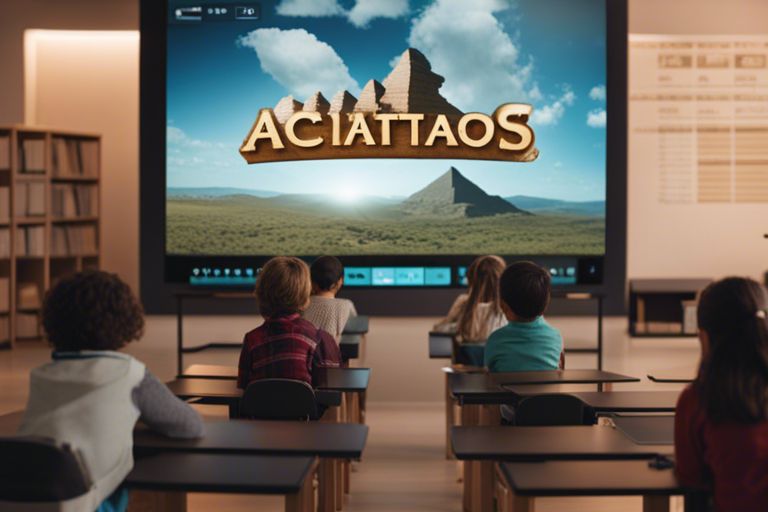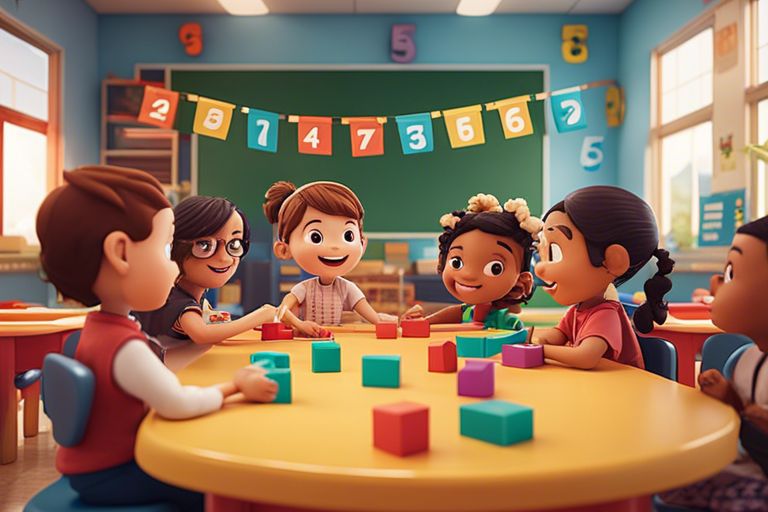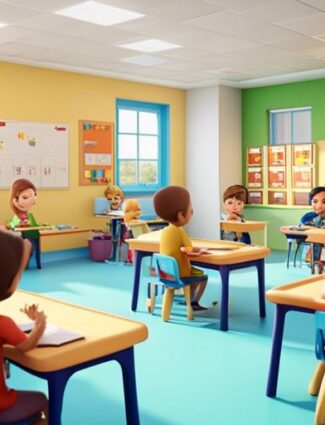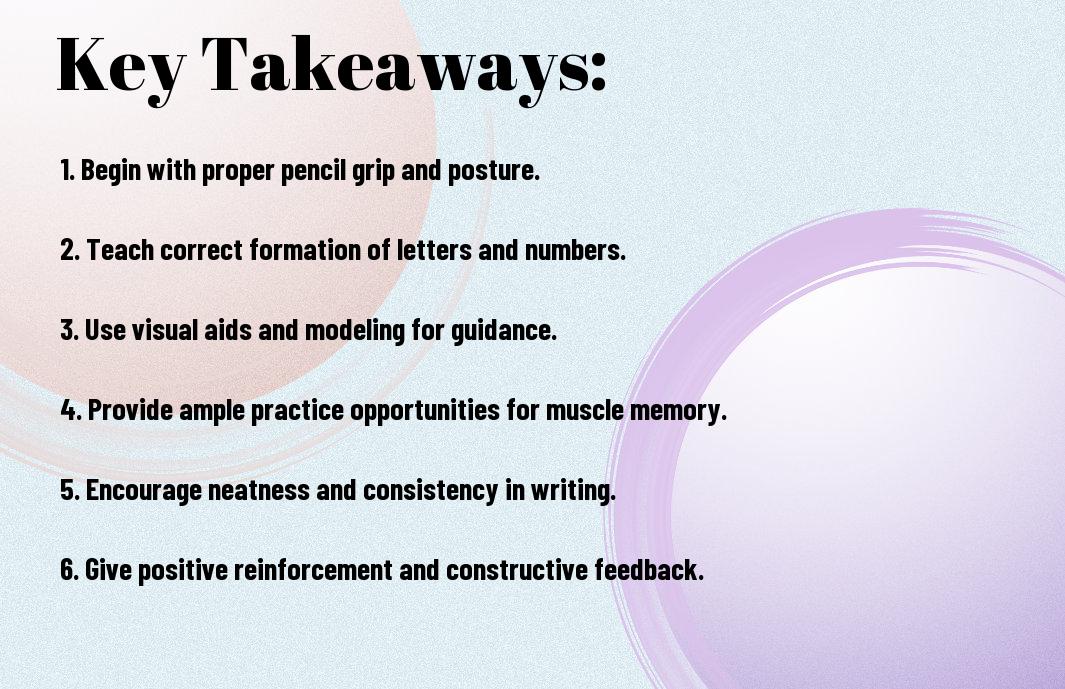Have you ever considered how to effectively integrate technology into your elementary social studies lessons? With the advancement of digital tools and resources, it’s important to explore ways to optimize the use of technology in the classroom. By incorporating interactive and engaging technology, you can enhance your students’ learning experience and maximize their understanding of social studies concepts.
In today’s digital age, it is essential to leverage technology to enrich your social studies curriculum. From virtual field trips to online research activities, there are countless opportunities to integrate technology into your lessons in a meaningful and effective way. This blog post will provide you with essential tips and strategies for efficiently incorporating technology into your elementary social studies lessons, allowing you to empower your students with the knowledge and skills they need to succeed in the 21st century.
Key Takeaways:
- Integrate technology seamlessly: Incorporating technology in social studies lessons should be done in a way that enhances the learning experience without overshadowing the content. It should complement the lesson, not distract from it.
- Use age-appropriate tools: Selecting technology tools that are developmentally appropriate for elementary students is essential. This may include interactive websites, educational apps, or multimedia resources that align with the curriculum.
- Promote critical thinking: Technology can be leveraged to encourage students to think critically about historical events, geographical locations, and cultural practices. It should be used as a tool to foster inquiry and deeper understanding of social studies concepts.
- Facilitate collaborative learning: Utilize technology to facilitate collaborative learning experiences where students can work together on projects, conduct virtual field trips, or engage in discussions with peers from different locations.
- Provide teacher guidance and support: Teachers should receive professional development and ongoing support in effectively incorporating technology in social studies lessons. This may include training on educational software, digital resources, and strategies for integrating technology into the curriculum.
Theoretical Framework
Clearly, technology can greatly enhance the teaching and learning of social studies in elementary classrooms. It provides an opportunity for interactive and engaging activities that can help students develop a deeper understanding of the subject matter. According to a blog post by GoGuardian, there are 9 Unique Ways to Use Technology in the Classroom that can be specifically tailored for social studies lessons.
Constructivist Learning Theory and Technology Integration
One theoretical framework that supports the incorporation of technology in elementary social studies lessons is constructivist learning theory. This theory emphasizes the active role of the learner in constructing their own understanding and knowledge through experiences and reflections. By integrating technology, you can provide students with the opportunity to explore and interact with historical artifacts, maps, and primary sources, allowing them to construct their own meaning and build connections between the past and present. This approach can foster a deeper understanding of social studies concepts and promote critical thinking skills.
The SAMR Model for Effective Technology Use in Education
Another valuable framework for integrating technology in elementary social studies lessons is the SAMR model, which stands for Substitution, Augmentation, Modification, and Redefinition. This model encourages you to consider how technology can be used to simply substitute traditional methods, or to transform and redefine the learning process. By applying the SAMR model, you can ensure that technology is not just used for the sake of using it, but rather to enhance and transform the learning experience for your students. This can lead to more meaningful and impactful social studies lessons that provide students with opportunities to collaborate, create, and engage with content in new and innovative ways.
Digital Literacy in the Social Studies Curriculum
Digital literacy is a crucial component of the social studies curriculum in the digital age. As you incorporate technology into your lessons, it is important to emphasize the development of digital literacy skills that will empower students to critically evaluate and navigate the vast amount of information available online. By integrating technology, you can provide students with the opportunity to analyze primary sources, access diverse perspectives, and engage in meaningful digital citizenship activities. This not only enhances their understanding of social studies concepts, but also prepares them to be active and responsible participants in the digital world.

Planning Your Technology-Integrated Lesson
Now that you have decided to incorporate technology into your elementary social studies lessons, it’s important to carefully plan how you will integrate these tools into your teaching. Planning a technology-integrated lesson involves outlining your learning goals and objectives, selecting appropriate technological tools, and aligning the use of technology with curriculum standards.
Outlining Learning Goals and Objectives
Before incorporating technology into your social studies lesson, it’s important to clearly outline the learning goals and objectives you want to achieve. What specific knowledge and skills do you want your students to gain from the lesson? How will technology help you meet these goals? By clearly defining your learning objectives, you can effectively integrate technology in a purposeful way that enhances the learning experience for your students.
Selecting Appropriate Technological Tools
When selecting technological tools for your social studies lesson, it’s crucial to choose ones that are age-appropriate and aligned with your learning goals. Consider the type of technology that will best support your lesson objectives. Will you be using interactive whiteboards, educational websites, or educational apps? Choose tools that are easy to use and will engage your students while adding value to the lesson. Additionally, ensure that the chosen tools are accessible to all students, regardless of their individual learning needs.
Aligning Technology with Curriculum Standards
Integrating technology into your social studies lesson should not be done in isolation from the curriculum standards. This is why it’s crucial to align the use of technology with the curriculum standards set for social studies education. By doing so, you ensure that the technology not only enhances the learning experience but also reinforces the content and skills outlined in the curriculum. In doing this, you are empowering your students to meet academic standards while utilizing the benefits of technology in their learning.
Remember, the key to successful lesson planning involving technology in elementary social studies is to make sure that the use of technology is purposeful, appropriate, and aligned with curriculum standards. By carefully outlining your learning goals and objectives, selecting appropriate technological tools, and aligning technology with curriculum standards, you can create an effective and engaging learning experience for your students.
Instructional Strategies Using Technology
Despite the challenges in incorporating technology into social studies instruction, there are numerous strategies that can be used to effectively integrate technology into your elementary social studies lessons. By using a variety of instructional strategies, you can create a dynamic and engaging learning environment for your students.
Interactive Multimedia Resources
Interactive multimedia resources, such as videos, digital maps, and virtual tours, can bring social studies concepts to life in your classroom. These resources allow you to provide students with visually engaging and interactive learning experiences that enhance their understanding of historical events, geography, and culture. By incorporating multimedia resources, you can cater to different learning styles and create opportunities for students to explore and interact with content in a meaningful way.
Geographic Information Systems (GIS) in Social Studies
Geographic Information Systems, or GIS, offer a powerful tool for teaching geography and spatial analysis in social studies. GIS platforms allow you to integrate real-time data and interactive mapping tools into your lessons, enabling students to analyze and interpret geographic information. By using GIS, you can help students develop critical thinking and problem-solving skills as they explore spatial patterns and relationships in historical and contemporary contexts.
Simulations and Role-Playing Games
Simulations and role-playing games provide a hands-on and immersive approach to learning about historical events, cultural practices, and societal issues. By using simulation software and digital role-playing games, you can create interactive scenarios that allow students to step into the shoes of historical figures, make decisions, and experience the consequences of their choices. These strategies can foster empathy and understanding as students engage with complex social studies concepts in a meaningful way.
Collaborative Tools and Social Media
Integrating collaborative tools and social media platforms into your social studies lessons can foster collaboration and communication among students. By utilizing digital platforms for group projects, discussions, and sharing of resources, you can create a dynamic learning community that extends beyond the classroom. Additionally, social media can provide opportunities for students to engage with diverse perspectives and current events in real time, enhancing their understanding of global citizenship and contemporary social issues.
Assessing Student Learning
Lastly, once you have incorporated technology into your elementary social studies lessons, it is important to assess student learning to ensure they are grasping the concepts and content. Technology can be a valuable tool for assessing student understanding and progress, as it provides various ways to measure and track their learning.
Formative Assessment Techniques
Formative assessment is an integral part of the teaching and learning process, allowing you to gauge student understanding and tailor your instruction accordingly. With technology, you can employ a variety of formative assessment techniques such as online quizzes, interactive polls, and digital exit tickets to gather real-time feedback on student comprehension. These tools can provide you with immediate insight into individual and group understanding, enabling you to make timely instructional decisions to address any misconceptions or gaps in learning. Additionally, utilizing digital formative assessment techniques allows you to track student progress over time and adjust your teaching to better meet their needs.
Summative Assessment with Technology
When it comes to assessing student learning at the end of a unit or lesson, technology can offer innovative ways to administer summative assessments. You can create digital assessments such as online tests, multimedia presentations, or projects that allow students to showcase their knowledge using various digital tools. These assessments not only serve as a means to evaluate student understanding, but also provide students with opportunities to demonstrate their learning in creative and engaging formats. Additionally, technology can streamline the grading process and provide you with detailed insights into individual student performance, allowing you to identify areas for improvement and further intervention.
Providing Feedback through Digital Platforms
One of the key benefits of incorporating technology into assessment is the ability to provide timely and personalized feedback to your students. Digital platforms and tools enable you to offer immediate feedback on assessments, guiding students towards a clear understanding of their strengths and areas for improvement. Whether it’s through comments on digital assignments, audio or video feedback, or collaborative digital platforms, technology allows you to deliver feedback that is meaningful and impactful, fostering a supportive learning environment. Furthermore, digital platforms can facilitate ongoing communication with students and parents, keeping them informed of progress and creating opportunities for feedback and reflection.
Addressing Challenges and Barriers
Your incorporation of technology in elementary social studies lessons may face various challenges and barriers that need to be addressed to ensure effective implementation. These challenges can range from digital divide and equity concerns to resistance from teachers and issues related to internet safety and digital citizenship. It is important to identify and overcome these barriers to ensure that technology is integrated seamlessly into the social studies curriculum.
Digital Divide and Equity Concerns
One of the primary challenges in incorporating technology in elementary social studies lessons is the digital divide and equity concerns. The digital divide refers to the gap between those who have access to technology and those who do not, while equity concerns focus on ensuring that all students have equal access to educational resources and opportunities. It is important to address this issue by providing access to technology and digital resources for all students, regardless of their socioeconomic status. This can be achieved through initiatives such as providing devices and internet access for students who do not have them at home, and ensuring that the curriculum includes alternative methods of instruction for students who may not have access to technology outside of the classroom.
Overcoming Resistance and Teacher Preparedness
Another challenge in incorporating technology in elementary social studies lessons is the resistance from some teachers and the need for teacher preparedness. Resistance may stem from a lack of familiarity with technology or a preference for traditional teaching methods. It is important to address this by providing professional development and training for teachers to enhance their technological proficiency and to demonstrate the benefits of using technology in social studies lessons. Teacher preparedness is crucial in ensuring that educators feel confident and competent in integrating technology into their lessons, and that they can effectively guide students in using digital resources for learning purposes.
Maintaining Internet Safety and Digital Citizenship
Furthermore, maintaining internet safety and teaching digital citizenship are significant considerations when incorporating technology in elementary social studies lessons. It is essential to ensure that students are aware of the potential risks associated with using the internet and digital tools, and are equipped with the knowledge and skills to navigate the online world responsibly. This can be achieved through integrating lessons on digital literacy, online safety, and ethical behavior into the social studies curriculum, and by establishing guidelines and protocols for online activities within the classroom. By addressing these concerns, you can create a safe and responsible digital learning environment for your students.
Professional Development and Continuing Support
To effectively incorporate technology into your elementary social studies lessons, it is crucial for you to have access to professional development and continuing support. This will allow you to stay updated on the latest tools, techniques, and best practices for integrating technology in your classroom. In addition, ongoing support will help you troubleshoot any issues that may arise and provide you with a community to share ideas and resources with.
Teacher Training Programs for Technology Integration
There are several teacher training programs available that are specifically designed to help you integrate technology into your social studies curriculum. These programs often provide hands-on training, resources, and guidance on how to effectively use technology to enhance your lessons. Additionally, they may offer certification or continuing education credits to further enhance your professional development.
One popular program is the Intel Teach program, which offers courses specifically focused on integrating technology into social studies and other subject areas. These courses provide you with the skills and knowledge to effectively incorporate technology into your lessons, allowing you to create engaging and interactive experiences for your students.
Communities of Practice and Ongoing Learning Opportunities
Joining a community of practice focused on technology integration in social studies can provide you with invaluable ongoing support and learning opportunities. These communities can be in the form of online forums, social media groups, or local educator networks where you can connect with other teachers who are also working to incorporate technology into their social studies lessons.
Participating in these communities allows you to share ideas, resources, and experiences with like-minded educators. This can help you stay updated on the latest trends and tools, as well as provide you with a support system for any challenges you may face. By collaborating with others, you can continue to grow and improve your use of technology in your social studies lessons.
The Importance of Efficiently Incorporating Technology in Elementary Social Studies Lessons
The efficient incorporation of technology into elementary social studies lessons is crucial for providing students with a well-rounded and engaging educational experience. By utilizing technology, you can create interactive and visually stimulating lessons that cater to the diverse learning styles of your students. Additionally, integrating technology into your lessons can help you keep your curriculum up-to-date and relevant in an increasingly digital world. Take advantage of the numerous educational apps, websites, and multimedia resources available to enhance your social studies curriculum and provide your students with a more engaging and immersive learning experience.
As you continue to develop and refine your social studies lessons, remember that technology is a powerful tool that can enrich your teaching and your students’ learning experiences. When used efficiently, technology can help you foster a deeper understanding of historical events, cultures, and global issues, while also developing your students’ digital literacy and critical thinking skills. By incorporating technology in a thoughtful and purposeful manner, you can create dynamic and engaging social studies lessons that will leave a lasting impact on your students.
FAQ
Q: Why is it important to incorporate technology in elementary social studies lessons?
A: Incorporating technology in elementary social studies lessons allows students to engage with the material in a dynamic and interactive way. It also helps to develop critical thinking and digital literacy skills, which are essential in the 21st century.
Q: What are some examples of technology that can be used in elementary social studies lessons?
A: Examples of technology that can be used in these lessons include interactive maps, educational video content, virtual field trips, and educational apps focused on social studies topics.
Q: How can technology be integrated into social studies curriculum without overshadowing traditional teaching methods?
A: Technology should be used as a supplementary tool to enhance traditional teaching methods, rather than overshadowing them. It’s important to strike a balance and use technology in a way that supports and reinforces the core concepts being taught.
Q: What are the potential challenges of incorporating technology in elementary social studies lessons?
A: Challenges may include access to technology resources, varying levels of technological proficiency among students, and the need for teacher training and support in effectively integrating technology into the curriculum.
Q: How can teachers ensure that technology enhances the learning experience in social studies lessons?
A: Teachers can ensure that technology enhances the learning experience by carefully selecting and integrating technology tools that align with the learning objectives, providing clear instructions and guidance for students, and regularly assessing the impact of technology on student engagement and learning outcomes. Additionally, teachers should continuously seek professional development opportunities to stay updated with the latest educational technology trends and best practices.





